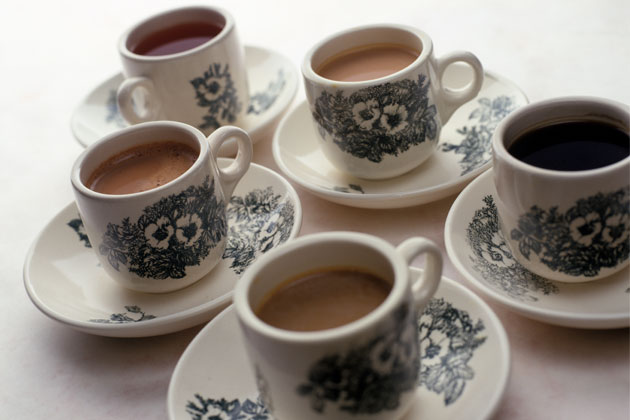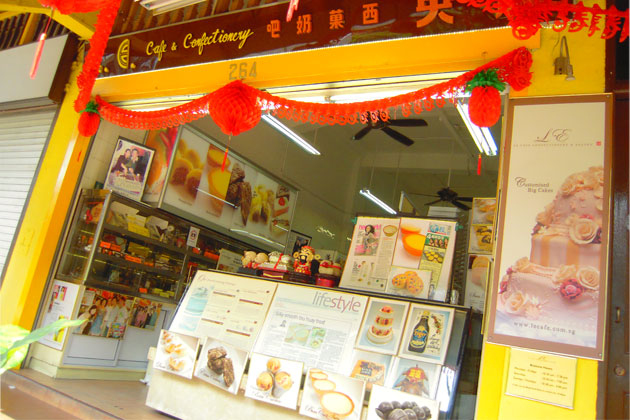
The Last Hainanese Stronghold
By Gastronaut - Thursday, Nov 21, 2013
In the 1820s, Singapore became a British colony, and this drew an influx of immigrants from southern China to Singapore in search of the proverbial pot of gold.
The Teochew, Hokkien and Cantonese were the first to arrive, and in big numbers. They settled in large, distinct communities in Chinatown from High Street to Cantonment Road, and quickly filled the trades and niches that were most lucrative in the local economy – such as banking, trading and retail businesses.
Then, jobs were assigned largely on referral from friends or fellow immigrants from the same province; therefore “outsiders”, such as those from other ethnic groups or provinces, were excluded in their “zone”. The Hainanese were the later migrant groups here and hence jobs were scarce. Many industries were “occupied” by other migrant groups.
So, most Hainanese menfolk ended up working for British colonial households as cooks, house helps or maintenance staff. They became adept at western cooking and cuisine, and familiar with western rituals like coffee and tea drinking, desserts, pastries and cakes. A number of them also found work in the merchant marine and British Navy as onboard cooks.

Beach Road – which, back in the day, was still a sea front – was the major port-of-call for the arriving Hainanese diaspora; and so the vicinity became a major settlement for them. The Hainanese enclave encompassed Beach Road, Tan Quee Lan Street, Bencoolen Street, and Middle Road. In those years too, Japanese businessmen set up many hotels in the area, catering to the new arrivals and other visitors.
Then came hard times; from the turn of the 1900s to the so-called Depression Era of the 1930s, Singapore was in economic slowdown, and many hotels closed. The Hainanese, who had enjoyed almost continuous employment then with the British and the Hokkiens, had accumulated savings. They seized the chance. They took over the vacant buildings left by the Japanese hoteliers at a low rental, and set up kopitiams (local style coffeeshops) to cater to the average and low income workers. The Fuzhou Chinese were already in the business but it was the Hainanese that took the kopitiam culture to another level.
They capitalised on what they had learned, largely from colonial culture, and sold coffee and tea, cakes and breads, and half-boiled eggs. Their set-up costs were minimal as the coffee shops were kept fairly basic with the then cheap, ubiquitous and iconic marble tables and chairs, cashier counter, ceiling fans, and a large glass display cabinet holding an assortment of colorful creamed cakes. Another iconic device ever present in such kopitiams perhaps was the Rediffusion radio. This toaster-sized entertainment box was the most popular and private cable radio boom box providing music, news and radio soapbox entertainment. It had an almost hypnotic and addictive effect on the customers. It attracted the workingman in droves.

The kopitiam “concept” took off. These little shops sprouted all over the island, with the highest concentrations in Chinatown and Hong Lim vicinity. In the Beach Road area alone, there were almost five kopitiams to a street.
The kopitiam baked its own cakes, made its own kaya, even roasted its own coffee beans on the premises. It was common to see coffee beans sitting on a metal tray over a bed of charcoal. The coffee beans came mainly from Malaysian and Indonesian suppliers; each coffee shop-owning family would have its own method and recipe for roasting the beans, and each would attract its own crowd of regular patrons.
But this was just the beginning for the enterprising Hainanese. From kopitiam fare, they branched to offer other comfort food (specializing in chicken rice and cze char) and also pioneered the “coffee house” concept, which brought western-style cuisine and ambience, first to the middle class, and later to the average Joe.

Today, many of these Hainanese food establishments have become household names or so-called “brands”. From the defunct Swee Kee Chicken Rice, to popular survivors such as Yet Con Chicken Rice & Restaurant, Le Café Confectionery & Pastry, Golden Mile Thien Kee Steamboat, and Prince Coffee House – these names marked the golden era of the “Hainanese occupation” in Singapore’s F&B history, with Beach Road as its epicenter. Even Raffles Hotel and especially Mandarin Hotel, were dominated by the Hainanese in the kitchen, with the famous Raffles Hotel “Singapore Sling” created by a Hainanese bartender.
Since the 1980s, urban redevelopment has changed the face of Beach Road, and in recent years the businesses in the area have become increasingly gentrified. Only a handful of old, traditional Hainanese eateries plod on, and even these face stiff competition from their sleek modern “food court” cousins. So spare a minute; drop in, have a meal, and linger awhile with one of these “Grande old dames” – while you still can.


